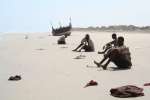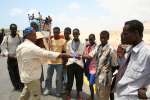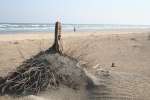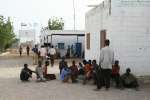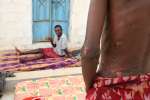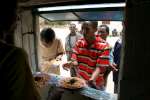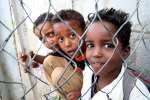- Text size
 |
|  |
|  |
| 
- Français
UNHCR welcomes the joint Franco-British declaration to address the situation in Calais
Press Releases, 20 August 2015
The UN High Commissioner for Refugees, António Guterres, welcomes the joint Franco-British declaration on the situation in Calais and the associated action plan announced today.
"I appreciate that the two Governments have taken a common approach to address the complex situation in Calais" said the High Commissioner "I welcome in particular the humanitarian and protection elements of the plan, while fully recognizing the importance of combatting smuggling and trafficking which exploit vulnerable individuals. In this context, it is important to note that to be effective in cracking down on smugglers and traffickers, we must increase the number of legal avenues for people in need of protection to come to Europe.
"Many of those in Calais are likely to be in need of international protection, having come from Afghanistan, Eritrea, Somalia, Sudan and Syria. We look forward to working closely with France and the UK to support efforts to find solutions for them", the High Commissioner added.
Specifically, UNHCR welcomes the proposed measures to improve the living and reception conditions in the Nord-Pas-de-Calais region, as well as in other locations, and the parallel efforts to address access to asylum and accommodation issues. The action plan also addresses the specific needs of vulnerable individuals in Calais, such as the rapidly growing group of women and children.
"Calais remains only a symptom of broader refugee and migration movements and UNHCR hopes for robust action to be taken in implementing the European Agenda on Migration and in establishing effective forms of international cooperation, including with countries of origin, first asylum and transit," the High Commissioner highlighted.
An increased proportion of sea arrivals are due to deadly and unabated conflict in Syria and deteriorating conditions for Syrian refugees in the neighbouring countries. Continued support to refugees and countries bearing the brunt of global forced displacement is vital.
For more information on this topic, please contact:
- In Paris, Fadma Moumtaz at +33 1 44 43 48 57
- In London, Laura Padoan at +44 207 759 8092
- In Geneva, William Spindler at +41 22 739 8956


















